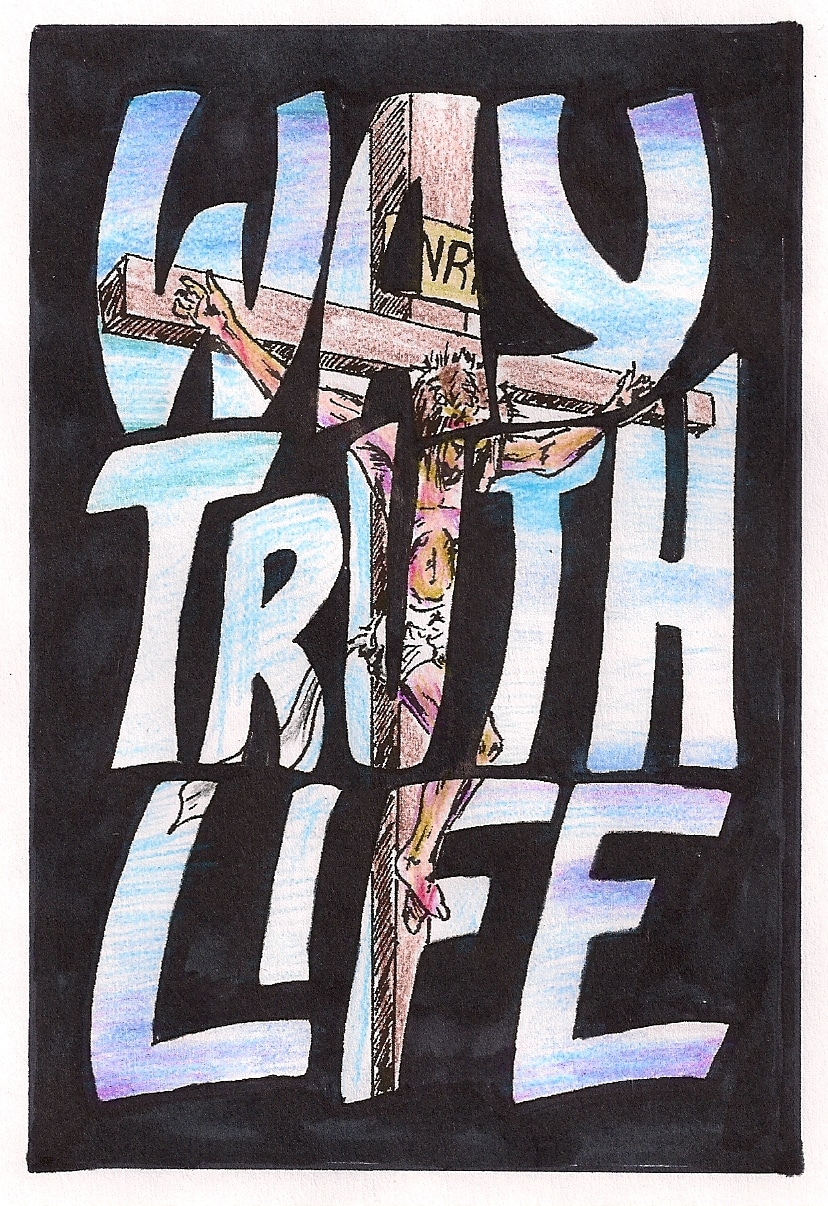In my Father’s house there are many rooms… Yet you know the way where I am going (vv.2-4). Jesus is implying that he must walk down a difficult path. He adds that his disciples should know the way extremely well, because he had often spoken about it.
Thomas replies on behalf of all: we do not know this way and we cannot guess where you want to go. Jesus explains that he himself will be the first to run the way once his mission is accomplished, then he will come back and will take the disciples with him.
The way is the difficult path toward Easter. It demands the sacrifice of life. Jesus talked about it many times, but the disciples were always reluctant to understand.
Agreeing to follow the way travelled by Jesus is an immediately entry pass into the kingdom of God, inside the Father’s house, but his house is not a paradise, it is the Christian community.
While there are many places, there are also many demands in this house. The many places are nothing, but the many ministries that must be carried out in a wide variety of situations require everyone to make their own capacity and talent, as well as the gifts received from God available to the community.
Every Christian should be active, not because there may be a shortage of priests, but because everyone has a job to do within the community.
The passage is a call for a check on the quality of community life: what is the percentage of active members? Are there commitments that no one wants to take up? Are there competitions to grab the glamorous assignments? Of the many jobs prepared by Jesus, are there still many undiscovered ones? Are there unemployed people?
The second part of today’s gospel reading is centred on the question asked by Philip: “Lord, show us the Father and that is enough.” Philip seems to be an interpreter of this intimate yearning of the human heart.
He knows that “no one has ever seen God” (John 1:18), because “he lives in unapproachable light and whom no one has seen or can see” (1 Timothy 6:16); but also recalls the bliss reserved for the pure in heart: “for they shall see God” (Matthew 5:8) and thinks that Jesus can satisfy his secret aspiration.
In his response, Jesus shows the way to see God. We needs to look at him. He is the human face that God has taken to manifest himself, to establish a relationship of intimacy, friendship and communion of life with people.
To know the Father, there is no need to dream up any arguments or indulge in complex reasoning. Getting lost in inadequate philosophical investigations is a fruitless pastime.
It is sufficient to contemplate Jesus, to observe what he does, says, teaches, behaves, loves, whom he prefers, attends to, caresses and by whom he allows himself be caressed, with whom he dines, he chooses, defends… because the Father does so. The works that Jesus fulfill are those of the Father (v.10).
“Whoever has seen me has seen the Father,” Jesus affirms (v.9). It is a gaze of faith that is required, a look that can go beyond appearances, beyond the purely material data, a look that captures the revelation of God in the works of Jesus. This seeing is believing.
Father Fernando Armellini SCJ
Claretian Publications
bibleclaret.org
Translated by Father John Ledesma SDB
Abridged by Father Jijo Kandamkulathy CMF











